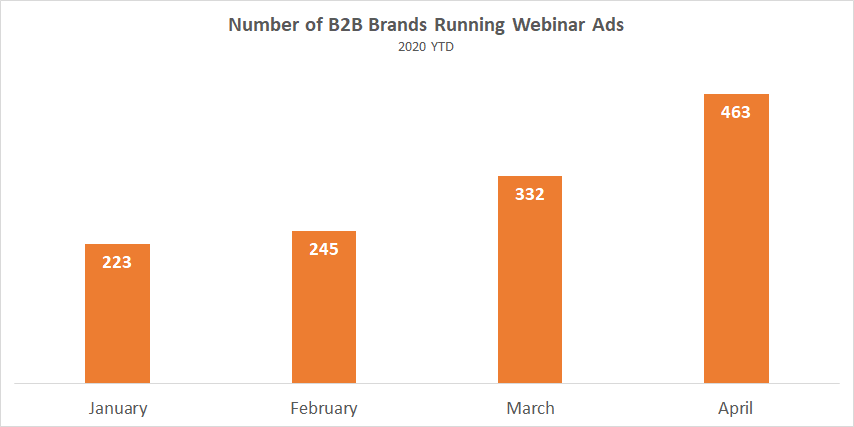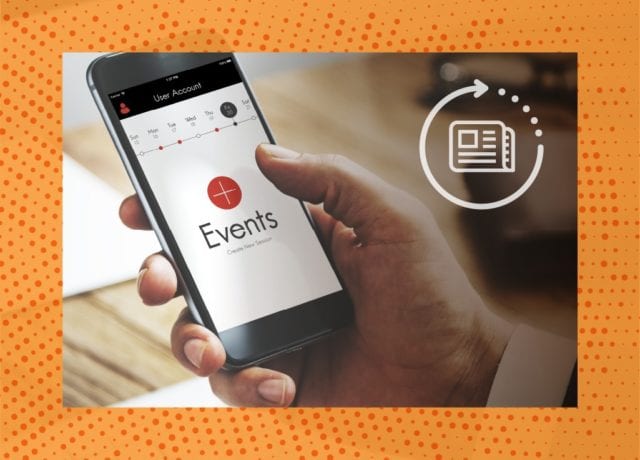COVID-19 threw a wrench in B2B events this year.
Even though 70% of event budgets are spent in Q1, event planners and publishers are eager to get the ball rolling again.
“We are exploring smaller, regional events in experiential spaces including outdoors, VIP/high quality attendee experiences and hybrid events,” says CEO of information and events company Questex Paul Miller. “We have also launched a number of virtual events in the short term that we expect to remain ongoing.” Questex has at least 14 upcoming virtual events planned between May and July.
Some companies have quickly pivoted towards large streamlined events, while others are using an ad hoc combination of solutions to bring people together in smaller webinars and events.
While virtual events are still a work in progress due to rapid changes, it is likely that the importance of online events is here to stay long-term. We dive into how brands are using virtual events, what they are learning from the changes and how this affects advertising.
We encourage you to subscribe to our blog for the latest data surrounding the advertising industry. We will provide daily updates as COVID-19 continues to make its mark on the US economy.

The Sudden Shift From In-Person to Online Events
It is unlikely that full trade shows will return by August (or even later), but there is still a large need for companies to generate leads and strengthen their brand in the meantime.
Informa plc, the world’s largest exhibitions firm, has had to reimagine how large trade shows could be executed online. Trade shows cannot fully be replicated virtually, but the firm has found new ways to create advantageous virtual experiences.
“We try to package sponsorship offerings around branding opportunities, lead-gen and education, and then how we facilitate networking where you can actually go into chat rooms and have one-on-one conversations,” says President of North America for Informa Markets Rick McConnell. Exhibitors ultimately want qualified leads.
With new virtual events technology, companies can be matched with the right leads based on specific demographics — much like programmatic advertising.
The other benefit the firm is seeing is that the event can be stretched out over time and participants can connect throughout the year rather than in one intensive weekend.
Brands Face New Challenges
Virtual events are not an exact replication of in-person events — and brands have new objectives for participating.
Reuters Events found that sponsors find virtual events favorable for developing their role as thought leaders, lead generation and brand recognition. Participants primarily attend for learning purposes.
With these new objectives, brands have to rework how they plan and create their promotional material. Companies must focus on quality because the content is competing with everything else on the internet.
“Attention spans online are undeniably shorter than in person, resulting in the need for a faster-paced program,” explained Managing Director of Reuters Events Piers Latimer. But the flip-side is that the content can reach a limitless audience at any point in time, rather than a small room of executives during a one hour session.
There is now a sea of virtual events. Executives will now be more picky about which events they choose to attend, and the ones in which they don’t pull out early. Publishers are experiencing a steep learning curve as they implement best practices and try to create the most value for stakeholders.
New Solutions Here to Help
LinkedIn has made changes to their platform to make virtual events more doable for companies. They have created a tighter integration between LinkedIn Live and LinkedIn Events to “help you connect with your community through virtual events, share important updates, and rally them from afar, all for free.”
Publishers are adding events to their service offerings. Government Executive Media Group, Inc. (GEMG) recently launched GovExec Virtuoso to facilitate virtual events.
GEMG was already in the hybrid in-person/digital event space for eight years, but this new launch is making more virtual events happen. Between January 2019 and March 2020, the company facilitated 75 digital events. From April to the end of May, it will have hosted 50.
Penske Media also recently made investments in event capabilities.
MediaRadar Insights
The number of B2B brands running ads promoting webinars has drastically increased.

Since January, the ads have more than doubled — highlighting the significance of this new trend.
Starting in April, the number of brands advertising on B2B websites was down about 15%, and spending had dropped 6%. The number of brands running webinar ads significantly increased while the number of brands across the board decreased.
Virtual events will not replace in-person events long-term — people are too social for that — but they are proving their value in the marketing playbook. For now, this is where B2B advertising is seeing a major shift.
For more updates like this, stay tuned. Subscribe to our blog for more updates on coronavirus and its mark on the economy.



